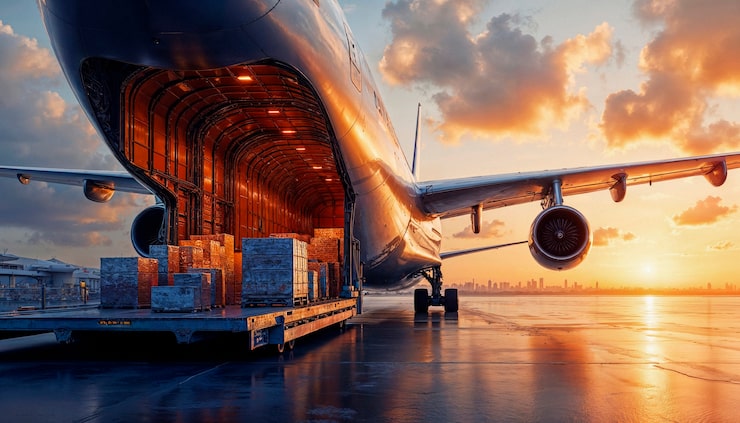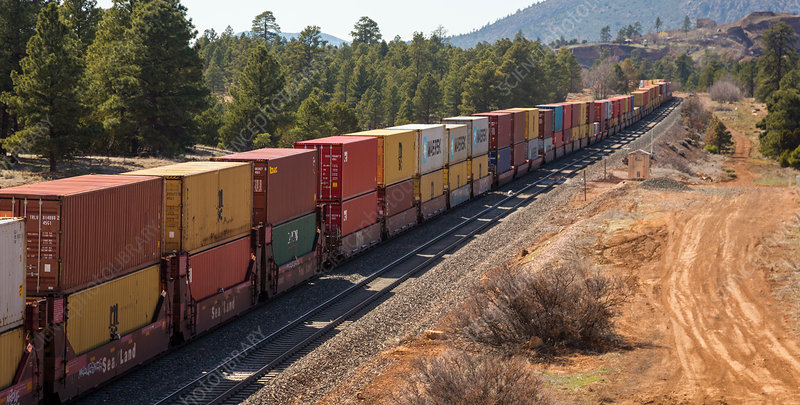- By Della tj
- September 15, 2025
- Air Freight, Shipping
Air freight from China to US remains one of the fastest and most secure methods of transporting goods across the Pacific. Although shipping costs are higher than sea freight, companies increasingly rely on air cargo for time-sensitive products. Importers face challenges such as customs clearance, complex documentation, and seasonal surcharges, yet a strategic plan helps businesses reduce risks while maintaining supply chain stability.
What Is Air Freight from China to US?
Air freight refers to the transportation of goods by aircraft, ensuring quick delivery between China and the United States. Businesses use this method when delivery schedules are tight, product value is high, or customer expectations demand reliability.
Key benefits of air freight:
- Fast delivery, often within 3–7 days.
- Reduced risk of cargo damage.
- Advanced AWB tracking systems for transparency.
- Simplified supply chain processes compared to multi-modal routes.
However, air freight costs are typically higher, so importers must evaluate whether speed outweighs the additional expense.
How Much Does Air Freight from China to US Cost?
Costs depend on shipment weight, size, route, and seasonality. Airlines calculate charges by comparing actual weight and volumetric weight, applying the higher value.
| Route (China → US) | 100 kg Cargo (USD) | 500 kg Cargo (USD) | Transit Time |
|---|---|---|---|
| Shanghai → Los Angeles | $620 | $2,800 | 3–5 days |
| Beijing → New York | $680 | $3,050 | 5–7 days |
| Guangzhou → Chicago | $640 | $2,950 | 4–6 days |
Note: Rates vary based on season, airline, and fuel surcharges.
What Factors Affect Air Freight Rates from China to US?
Several factors influence pricing:
- Cargo weight and dimensions: Oversized shipments incur higher charges.
- Origin and destination airports: Tier-1 hubs (Shanghai, Beijing) often have lower rates.
- Seasonal demand: Q4 and Chinese New Year create surcharges.
- Special cargo: Dangerous goods or temperature-sensitive items need extra handling.
- Incoterms: EXW, FOB, or DDP terms shift responsibility for costs.
Consequently, businesses must plan bookings in advance and compare multiple carriers.
What Documents Are Needed for Air Freight from China to US?
Smooth customs clearance requires accurate paperwork. Missing or incorrect documents can cause shipment delays.
| Document | Purpose |
|---|---|
| Air Waybill (AWB) | Acts as a receipt and transport contract. |
| Commercial Invoice | Provides value and description of goods. |
| Packing List | Details cargo dimensions, weight, and contents. |
| Customs Declaration | Required for import clearance at US ports of entry. |
| Export License | Needed for restricted goods shipped from China. |
| Insurance Certificate | Covers cargo in case of loss or damage. |
How Long Does Air Freight Take from China to US?
Transit times depend on routes and services. Direct flights are faster, while indirect flights add 1–2 days.
| Route (China → US) | Direct Transit | Indirect Transit |
|---|---|---|
| Shanghai → Los Angeles | 3–4 days | 5–6 days |
| Beijing → New York | 5–6 days | 6–8 days |
| Guangzhou → Chicago | 4–5 days | 6–7 days |
Compared to sea freight, which takes 20–35 days, air freight significantly reduces delivery schedules.
Real Case Studies: Air Freight from China to US
Case 1: Electronics (Shenzhen → Los Angeles)
- Goods: 200 kg of smartphones.
- Mode: Direct air freight.
- Cost: $1,300.
- Transit time: 4 days.
- Result: Enabled product launch before Black Friday sales.
Case 2: Apparel (Shanghai → New York)
- Goods: 450 kg of seasonal clothing.
- Mode: Air freight with consolidation.
- Cost: $2,750.
- Transit time: 6 days.
- Result: Helped retailer stock stores ahead of spring demand.
How Does Air Freight Compare with Sea and Rail Freight?
| Mode | Cost (per 500 kg) | Transit Time | Pros | Cons |
|---|---|---|---|---|
| Air Freight | $2,800–$3,200 | 3–7 days | Fastest, reliable, transparent tracking | Highest cost, weight limits |
| Sea Freight | $900–$1,200 | 25–35 days | Cheapest, large capacity | Slow, risk of port delays |
| Rail Freight | $1,500–$2,000 | 15–20 days | Moderate speed, eco-friendly option | Limited routes, inland delays |
Therefore, importers choose air freight when speed and reliability matter more than cost.
Why Should Businesses Choose Air Freight from China to US?
Air freight is essential for industries where time is money. Electronics, fashion, pharmaceuticals, and automotive parts benefit from its speed and security.
- Electronics: Protects high-value items.
- Fashion: Ensures seasonal product launches.
- Pharmaceuticals: Maintains temperature-sensitive cargo integrity.
- Automotive: Supports just-in-time manufacturing.
Moreover, businesses often rely on freight forwarders to handle the complexity of booking, customs, and last-mile delivery.
How Can Importers Save on Air Freight Costs?
Although prices are high, importers can adopt several strategies:
- Book early to avoid seasonal surcharges.
- Consolidate shipments to achieve better per-kg rates.
- Compare multiple airlines and routes.
- Negotiate long-term contracts with freight forwarders.
- Use hybrid models (air + truck) for inland delivery.
As a result, businesses can maintain competitiveness without sacrificing delivery schedules.
Common Challenges in Air Freight from China to US
Despite the advantages, importers face hurdles:
- Customs delays: Missing HS codes or incorrect values trigger inspections.
- Capacity shortages: Peak seasons often cause limited space.
- High fuel surcharges: Prices fluctuate significantly.
- Regulatory compliance: Certain goods require special permits.
Without a doubt, working with experienced freight forwarders minimizes risks.
Conclusion
Air freight from China to US provides the fastest shipping option, delivering goods within days instead of weeks. Although costs remain higher than sea freight, businesses benefit from speed, reliability, and transparent tracking. By planning bookings early, consolidating shipments, and working with expert forwarders, companies can optimize their supply chains. Ultimately, understanding air freight from China to US helps importers balance cost with delivery efficiency while meeting customer expectations.
- Consult TJ China Freight Forwarding for the lowest quote. They will provide you with reliable, cost-effective service.
FAQ:
Q1.What is the cheapest way to handle small parcels by air freight from China to US?
Using consolidated air freight services helps reduce per-kg costs for small shipments while still ensuring timely delivery to the US.
Q2.Can perishable goods be shipped via air freight from China to US?
Yes, temperature-controlled cargo services allow perishable goods to travel safely, maintaining freshness and meeting strict US import rules.
Q3.How do I calculate volumetric weight for air freight from China to US?
Volumetric weight is length × width × height ÷ 6,000. Carriers charge whichever is higher, actual weight or volumetric weight.
Q4.What are common restricted items in air freight from China to US?
Lithium batteries, aerosols, flammable liquids, and hazardous chemicals require special permits or may be prohibited entirely under air regulations.
Q5.How can businesses handle customs clearance for air freight from China to US?
Partnering with freight forwarders ensures proper documentation, HS codes, and bonds, reducing clearance delays and preventing unexpected penalties.




